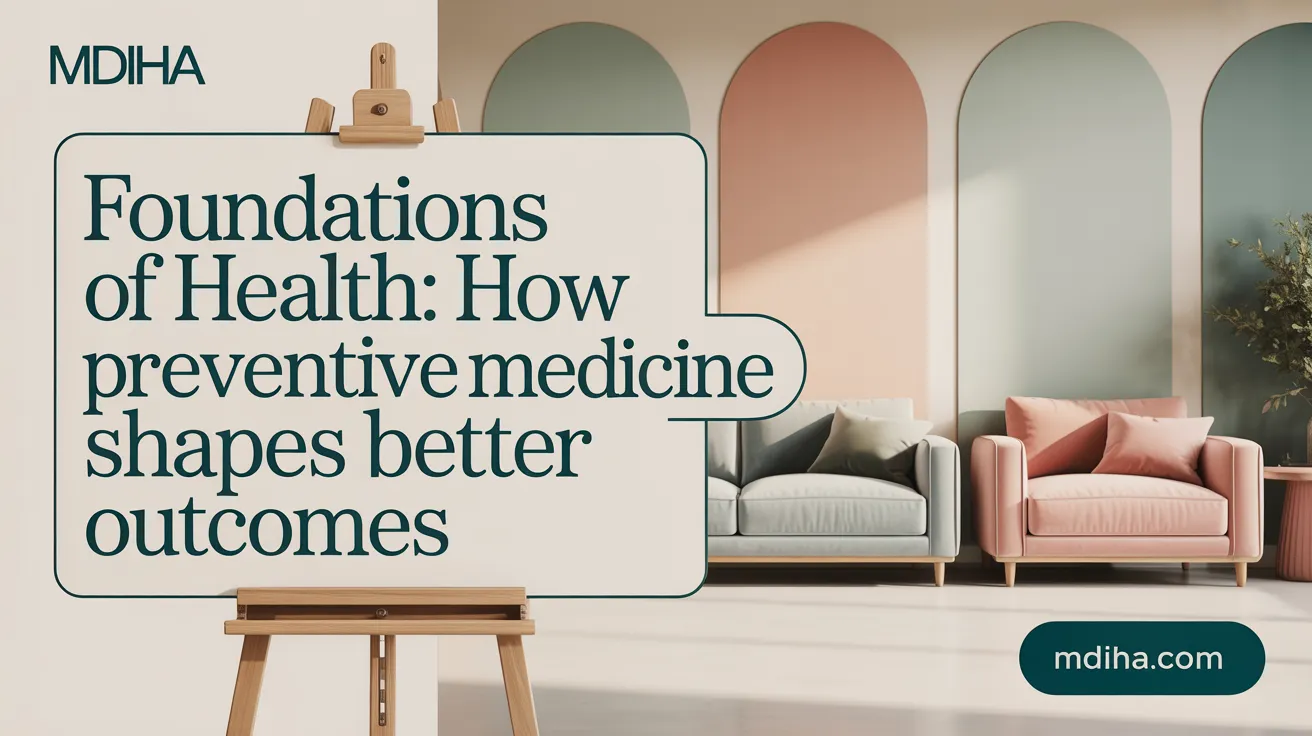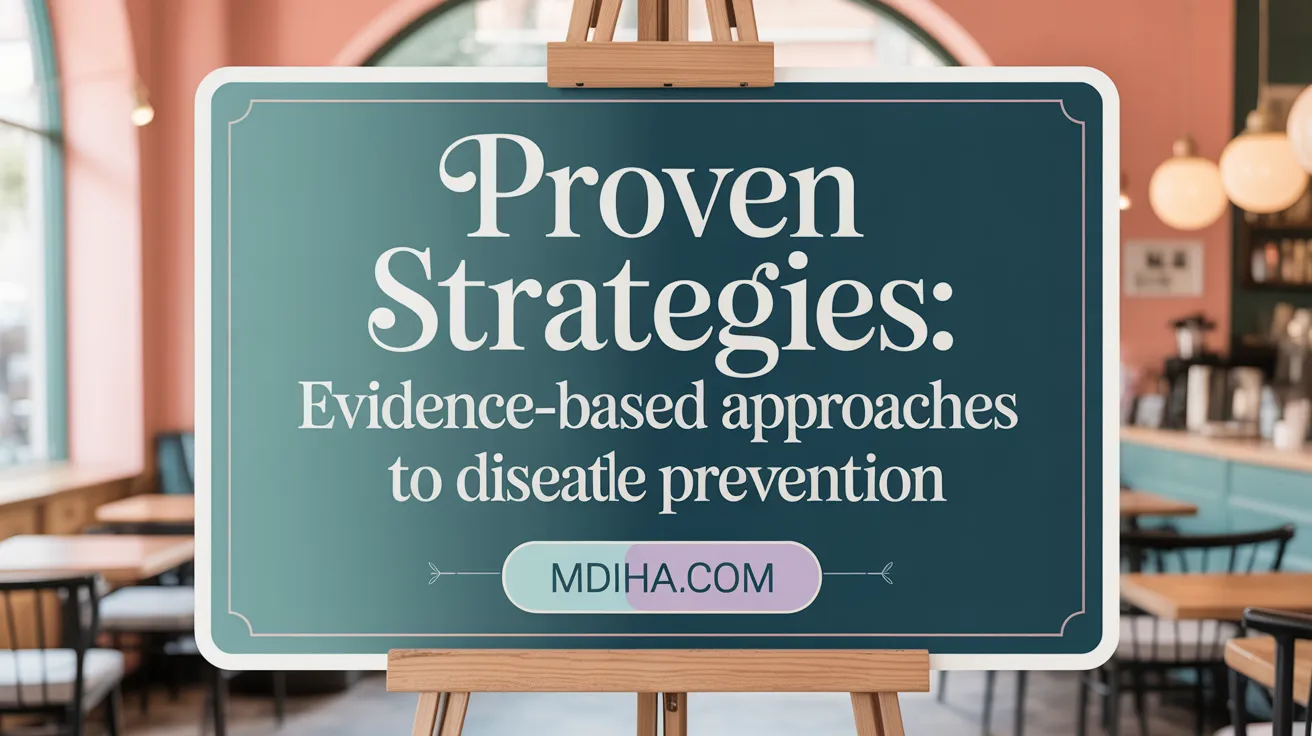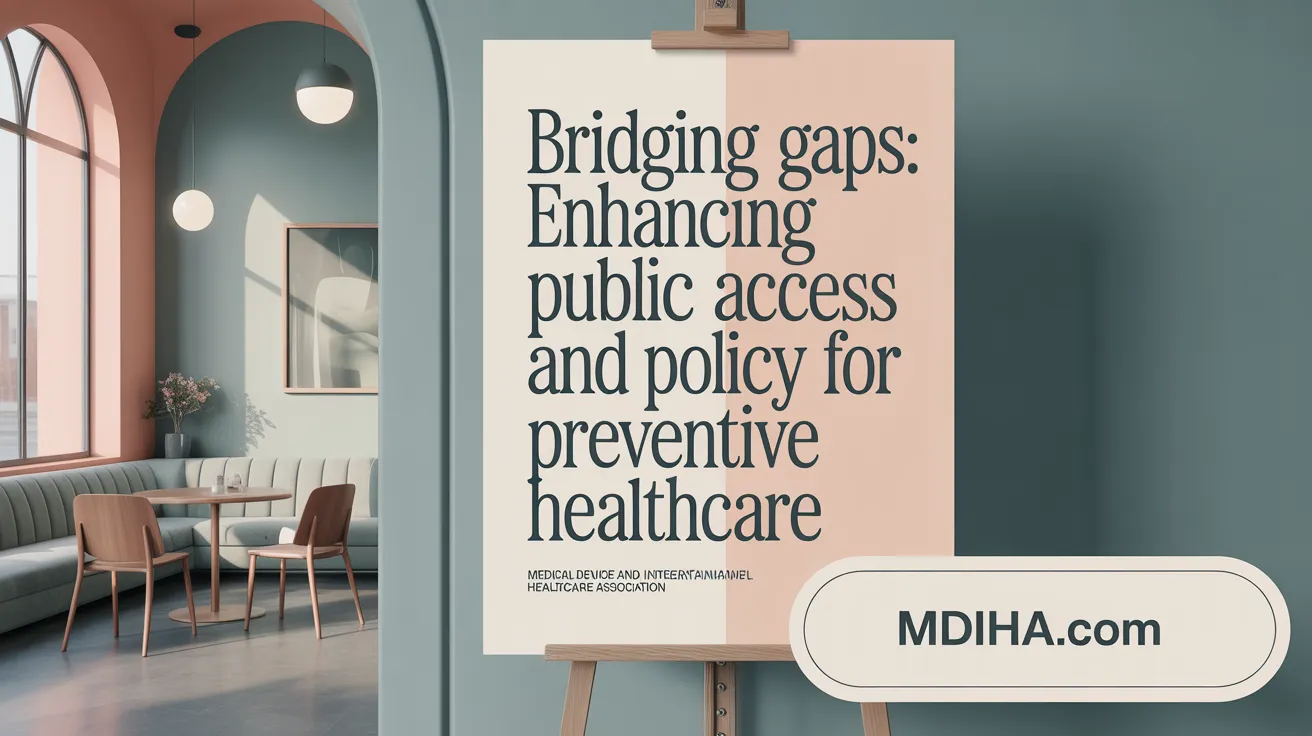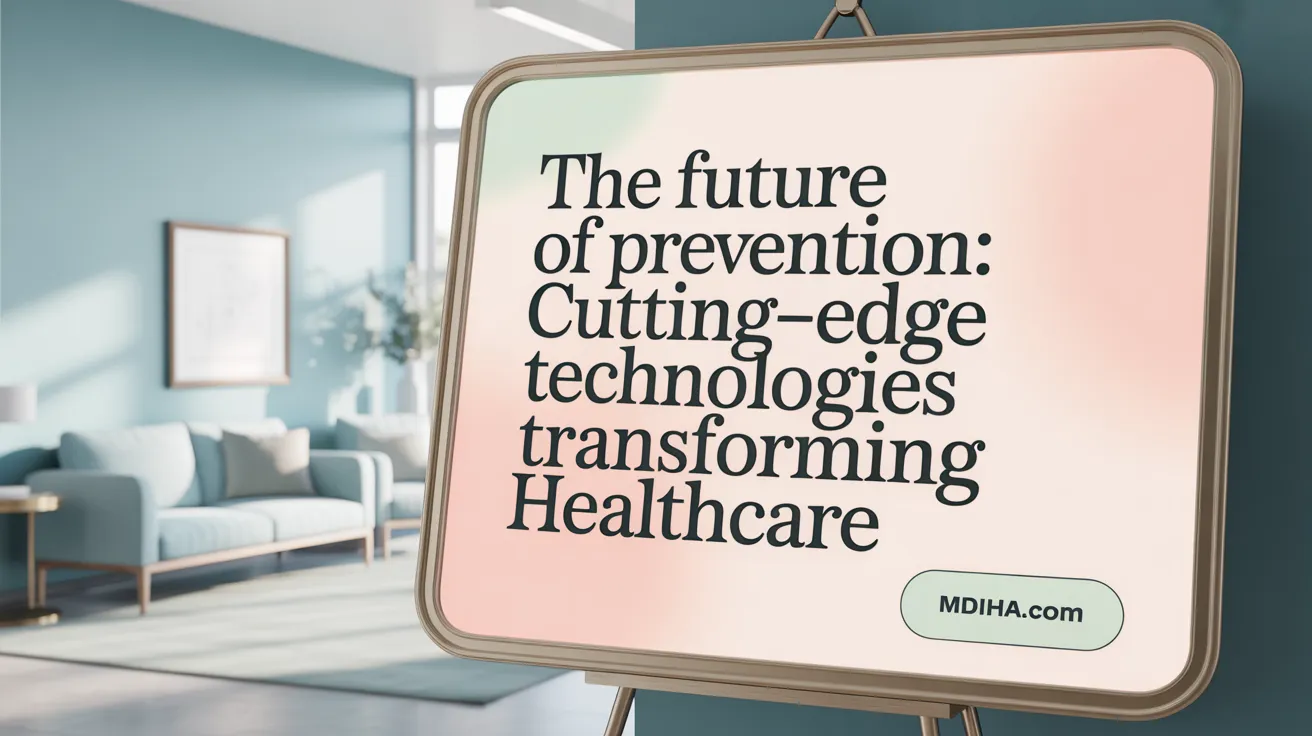Understanding Preventive Medicine and Its Crucial Role
Preventive medicine represents a transformative approach in healthcare that focuses on averting diseases before they occur, rather than reacting to illness after symptoms arise. This proactive strategy involves screenings, vaccinations, lifestyle modifications, and community outreach to promote long-term health and well-being. As chronic diseases increasingly burden health systems worldwide, prevention has become more essential than ever to improve health outcomes, reduce healthcare costs, and address disparities in access to care. This article explores why preventive medicine is poised to be the cornerstone of future healthcare, supported by technological advancements, evolving policies, and shifting medical paradigms.
The Fundamentals of Preventive Medicine and Its Impact on Health Outcomes

What is preventive medicine and why is it important for health outcomes?
Preventive medicine focuses on stopping diseases before they start. It involves activities like routine screenings, vaccinations, dental visits, and health education that help catch health issues early or prevent them altogether.
This approach is vital because it reduces the risk of developing serious illnesses, disabilities, and even death. By identifying problems early, treatment can be more effective, less invasive, and less costly. Preventive medicine also plays a significant role in lowering long-term healthcare expenses and easing the burden on medical systems.
Why are preventive services such as screenings, vaccinations, and dental check-ups important?
Services like screenings for cancer and chronic diseases, vaccinations against communicable diseases, and regular dental visits are pillars of preventive care. They help detect health issues at an early stage when interventions are most successful.
These services also promote overall health and prevent the progression of illnesses. For children, regular well-child visits and dental check-ups track development and catch potential health problems early. For adults, routine screenings and immunizations help maintain health and prevent the onset of diseases.
What barriers exist to accessing preventive care and how can they be addressed?
Despite its benefits, many people face barriers to preventive care. Cost is a common obstacle, especially for those without sufficient insurance coverage. Lack of primary care providers, geographical distance, and limited awareness about available services also hinder access.
To overcome these challenges, policy changes that eliminate or reduce out-of-pocket costs are crucial. Increasing public awareness through education campaigns and expanding healthcare infrastructure—such as telemedicine—can also make preventive services more accessible, especially for vulnerable groups.
Overall impact
By emphasizing preventive medicine, health systems aim to shift from treating diseases only after they develop to promoting healthier lifestyles and early detection. This transition, supported by technological advances like genomics and digital health tools, is expected to improve health outcomes globally.
Investing in preventive care not only saves lives but also boosts economic productivity by reducing healthcare costs and long-term disease burden. As populations age, the importance of preventing chronic diseases through targeted and personalized strategies becomes even more significant.
Efforts to eliminate barriers, educate the public, and leverage new technology are essential to maximizing the benefits of preventive medicine and building healthier communities for the future.
Economic Advantages: How Preventive Medicine Curbs Healthcare Costs
How does preventive medicine help in reducing healthcare costs?
Preventive medicine plays a vital role in lowering healthcare expenses by focusing on early intervention. By identifying health risks early through screening programs, vaccinations, and lifestyle modifications, it prevents the development or progression of chronic diseases such as diabetes, heart disease, and cancer. This approach reduces the need for expensive treatments, hospital stays, and emergency care.
Investing in high-value preventive services, like regular check-ups and targeted screenings, provides long-term financial benefits. For example, detecting conditions early often allows for less invasive and less costly treatments, which significantly decreases overall health system spending.
What is the role of no-cost preventive service coverage?
Offering preventive services without out-of-pocket costs encourages more individuals to participate in health maintenance activities. Coverage of free vaccinations, screenings, and counseling under programs like the Affordable Care Act removes financial barriers, boosting utilization rates.
When patients access these services early, illnesses are caught before symptoms appear or conditions worsen. Consequently, this proactive approach decreases the incidence of severe health issues, translating to reduced treatment costs.
How does preventive medicine impact chronic diseases and the healthcare system?
Chronic diseases such as obesity, diabetes, and hypertension account for a large share of healthcare costs globally. Preventive strategies targeting lifestyle factors—like promoting physical activity, healthy eating, and smoking cessation—can dramatically reduce the occurrence and severity of these conditions.
By preventing or delaying the onset of chronic diseases, the healthcare system experiences less strain from long-term management and complications. This shift leads to significant savings and more sustainable healthcare resource utilization.
What are examples of cost-effective preventive programs?
Community-based programs that promote immunizations, tobacco cessation, and healthy lifestyle choices have proven cost-efficient. Childhood immunization programs, for example, are highly effective at preventing infectious diseases and are considered some of the most economical investments in public health.
Similarly, programs that support smoking cessation and physical activity have shown to reduce the risk of chronic illness, saving substantial costs over time. Policymakers and healthcare providers are increasingly prioritizing such strategies to deliver high-value care that benefits both individuals and the economy.
| Aspect | Description | Economic Impact |
|---|---|---|
| Cost-saving potential | Early detection and lifestyle interventions reduce expensive treatments | Substantial long-term savings |
| No-cost coverage | Eliminates financial barriers, increasing utilization | Higher preventive care uptake, fewer severe illnesses |
| Chronic disease reduction | Promoting healthy behaviors prevents disease development | Lower management and hospitalization costs |
| Cost-effective programs | Immunizations, tobacco control, physical activity | Proven to be economical and impactful |
Preventive medicine is not just a health benefit but also an essential strategy for economic sustainability. As early interventions become more widespread, both health outcomes and healthcare costs stand to improve markedly.
Technological Innovations Driving the Preventive Healthcare Revolution
What recent trends and technological advancements are supporting the development of preventive healthcare?
Modern preventative healthcare increasingly relies on cutting-edge technologies that enable early detection, personalized care, and health promotion. Digital health tools, such as mobile apps and wearable devices, allow continuous monitoring of vital signs, physical activity, and biometric data, empowering individuals to track their health in real-time. For example, wearable sensors can detect irregular heart rhythms or abnormal glucose levels, prompting early medical consultations.
Genomics and artificial intelligence (AI) are transforming risk prediction and individual treatment plans. Advances in genome sequencing and polygenic risk scores provide detailed insights into genetic predispositions for diseases like cancer and diabetes. AI-powered algorithms analyze vast amounts of health data to forecast disease progression and recommend personalized prevention strategies.
Telemedicine and remote monitoring technologies have expanded healthcare access, especially for rural or underserved populations. Video consultations, combined with digital health platforms, facilitate timely medical advice without the need for in-person visits. Continuous glucose monitors and wearable cardiac devices exemplify how remote sensors assist in managing chronic conditions outside traditional clinical settings.
Data integration plays a critical role in proactive health management. Secure electronic health records and interconnected IoT devices compile comprehensive health information, enabling healthcare providers to make data-driven, tailored interventions. Innovations such as blockchain enhance data security and transparency, fostering trust among patients and providers.
Together, these technological advancements support a shift from reactive treatment to preventive care. They enhance early diagnosis, enable personalized medicine, and promote healthier lifestyles, ultimately reducing disease burden and healthcare costs.
| Technology Type | Function | Benefits |
|---|---|---|
| Wearable Devices | Continuous health monitoring | Early detection of anomalies, real-time health tracking |
| Genomics & AI | Risk prediction, personalized care | Improved disease prevention, targeted interventions |
| Telemedicine | Remote consultations and management | Increased access, reduced travel, timely care |
| Data Integration & Blockchain | Secure, comprehensive health data sharing | Better coordination, enhanced data security |
| Digital Therapeutics | Behavior modification tools | Support for lifestyle changes, prevention |
The integration of these technologies marks a significant step toward more effective and accessible preventative healthcare, aiming for healthier populations worldwide.
Evidence-Based Strategies Effectively Preventing Disease and Enhancing Health

What are some evidence-based prevention strategies and how effective are they?
Preventive care spans multiple levels, from primordial to quaternary strategies, each playing a vital role in reducing disease burden and promoting health. Primordial prevention focuses on societal and environmental factors, such as urban planning that encourages walking and cycling, aiming to prevent risk factors from emerging in the first place.
Primary prevention includes widespread immunizations, lifestyle modifications like healthy eating and increased physical activity, and tobacco cessation programs. These measures are highly effective; for instance, vaccines have significantly decreased incidences of infectious diseases, saving millions of lives annually.
Secondary prevention involves screening programs designed for early detection of diseases such as cancer, diabetes, or heart disease. These screenings allow for timely treatment, often reducing mortality rates by 15-20% and preventing disease progression.
Tertiary prevention aims to reduce the impact of an ongoing illness or injury, such as rehabilitation for stroke or diabetes management programs. These approaches help improve quality of life and prevent complications.
Beyond these levels, quaternary prevention focuses on avoiding unnecessary or harmful medical interventions, ensuring that healthcare is safe and appropriate.
Behavioral health initiatives and community-based programs also play a crucial role. For example, substance use prevention and mental health promotion have shown significant reductions in adverse health outcomes.
When these strategies are based on rigorous scientific evidence and adapted to local community needs, they are remarkably effective. Vaccinations, for example, are second only to clean water in saving lives worldwide, preventing around 4 million deaths annually.
Overall, evidence-based prevention strategies lead to a profound decrease in disease incidence and severity, saving lives and reducing healthcare costs. Their success depends on robust implementation, community engagement, and continuous evaluation.
More Information
Search Query: Effectiveness of evidence-based preventive strategies
| Prevention Level | Main Focus | Example Measures | Effectiveness Impact |
|---|---|---|---|
| Primordial | Environmental & societal change | Creating walkable communities | Prevents initial risk factor emergence |
| Primary | Prevent disease onset | Vaccinations, anti-smoking campaigns | Reduces disease occurrence significantly |
| Secondary | Early detection & intervention | Cancer screenings, blood pressure checks | Cuts mortality by enabling early treatment |
| Tertiary | Reduce complications in chronic illness | Rehab, medication adherence | Improves quality of life, prevents disability |
| Beyond | Avoiding unnecessary care | Clinical judgment, ethical oversight | Ensures appropriate, safe interventions |
This multi-layered approach, when reinforced with strong policy support and community participation, forms the backbone of effective health prevention, ultimately leading to healthier populations and more sustainable healthcare systems.
From Reactive to Proactive: The Shift Towards Personalized Preventive Healthcare

How is healthcare shifting from traditional approaches to preventive and personalized practices?
Healthcare systems are evolving from focusing mainly on treating illnesses after they develop to emphasizing prevention and individual health management. This new approach prioritizes using advanced technologies such as genomics, artificial intelligence, wearable health devices, and telemedicine to identify risks early and tailor interventions to each person’s unique health profile.
Genetic testing and risk assessments allow healthcare providers to predict the likelihood of developing certain diseases, enabling earlier and more targeted preventive actions. For instance, polygenic risk scores help identify individuals at higher risk for conditions like breast cancer and diabetes, guiding personalized screening and lifestyle interventions.
The transition also involves a stronger emphasis on engaging patients actively in their health. Longer and more personalized wellness visits foster trust and motivate patients to follow prevention strategies. Digital health tools, like mobile apps and continuous monitoring devices, facilitate ongoing health data collection and real-time feedback, encouraging healthier behaviors and early detection.
This shift is not only improving health outcomes but also reducing healthcare costs. Early intervention prevents costly emergency treatments and manages chronic conditions more effectively. Overall, moving towards personalized prevention transforms healthcare into a more proactive, efficient, and patient-centered service, aiming to decrease disease burden and enhance quality of life.
Public Health and Policy: The Impact of Preventive Coverage and Accessibility

What are the public health implications of preventive coverage and policies?
Preventive coverage and policies play a vital role in shaping the overall health of populations. By ensuring access to essential services such as screenings, vaccinations, and health counseling, these policies facilitate early detection and intervention of diseases, leading to better health outcomes.
One of the most significant benefits is the reduction of health disparities. Removing financial barriers through programs like the Affordable Care Act’s no-cost preventive services encourages vulnerable and low-income populations to utilize necessary healthcare. This increased access helps address social determinants of health and promotes health equity across different socioeconomic groups.
Enhancing the utilization of preventive services results in early diagnosis, which can prevent the progression of many chronic conditions such as diabetes, heart disease, and cancer. This proactive approach not only improves the quality of life for individuals but also decreases the long-term healthcare costs associated with treating advanced diseases.
Furthermore, comprehensive preventive policies support various levels of health promotion, from primordial prevention (reducing risk factors before they develop) to quaternary prevention (preventing unnecessary or harmful interventions). They help create a culture of health, where prevention becomes a routine part of healthcare, community life, and individual behavior.
The public health implications extend beyond immediate health benefits. Effective preventive policies contribute to a resilient healthcare system capable of managing disease burdens efficiently. Reduced morbidity and mortality rates, alongside decreased healthcare spending, demonstrate the societal value of investing in preventive coverage.
In summary, policies that promote accessible, no-cost preventive services are instrumental in advancing public health. They help reduce disease burden, promote health equity, lower healthcare costs, and build healthier communities—making prevention a cornerstone of modern healthcare strategies.
The Future Horizon: Scientific and Technological Advances Shaping Preventive Medicine

What future developments and scientific insights are expected in the field of preventive medicine?
The landscape of preventive medicine is on the cusp of significant transformation, driven by cutting-edge technological advancements. Future progress will leverage genomics, artificial intelligence (AI), bioengineering, wearable devices, and telemedicine to enable more accurate risk stratification, early diagnosis, and tailored interventions for diseases.
Genomics and polygenic risk scoring are expected to play pivotal roles in predicting individual disease susceptibility. Combining genetic data with traditional health measures will make personalized prevention strategies more effective. For example, individuals at high risk for conditions like breast cancer or diabetes may benefit from targeted screening and preventive actions before symptoms develop.
Digital health technologies such as mobile health apps, continuous monitoring wearables, and AI-based diagnostic tools will allow for ongoing health oversight outside traditional clinical settings. These tools will facilitate proactive disease management, promoting health and wellness rather than just treating illness.
The shift aligns with the P4 medicine paradigm—predictive, preventive, personalized, and participatory—placing individuals at the center of their health journey. This approach will empower patients to actively participate in their care, improving adherence and outcomes.
Understanding the complex relationship among genetic, environmental, and behavioral factors will refine risk prediction models, helping clinicians predict disease onset more accurately and timing preventive measures effectively.
The global aging population and recent experiences with pandemics like COVID-19 will further accelerate innovations. They highlight the necessity of establishing resilient, accessible, and scalable preventive solutions.
Initiatives such as the UK’s 'Our Future Health' exemplify data-driven prevention efforts. By recruiting millions to gather comprehensive genetic, health, and lifestyle data, these programs aim to enable early detection and intervene well before diseases manifest.
Overall, these scientific insights and technological innovations will foster a future where healthcare emphasizes early detection and health promotion, potentially reducing disease burden, lowering costs, and improving quality of life worldwide.
Preventive Medicine: A Sustainable Path Forward
The future of healthcare lies in prevention—shifting the focus from treating illness to fostering wellness and resilience. Preventive medicine not only improves individual health and quality of life but also offers a strategic approach to managing the growing challenges of chronic diseases and aging populations. Supported by technological innovation, evidence-based strategies, and inclusive public policies, preventive medicine promises to create a more equitable, efficient, and effective healthcare system. Embracing this proactive model is essential to sustaining health outcomes and controlling costs globally, ultimately transforming how society cares for its members. Investing in prevention today paves the way for healthier generations tomorrow.
References
- Preventive Care - Healthy People 2030 | odphp.health.gov
- The Application of Preventive Medicine in the Future Digital ...
- Maintaining preventive coverage is vital to public health
- Missed Prevention Opportunities - The Healthcare Imperative
- Proactive Health: The Shift Towards Preventative Healthcare
- 'Prevention is the best medicine to stop disease before it ...
- The Application of Preventive Medicine in the Future Digital ...
- "Our Future Health": Shifting from curative to preventive care
